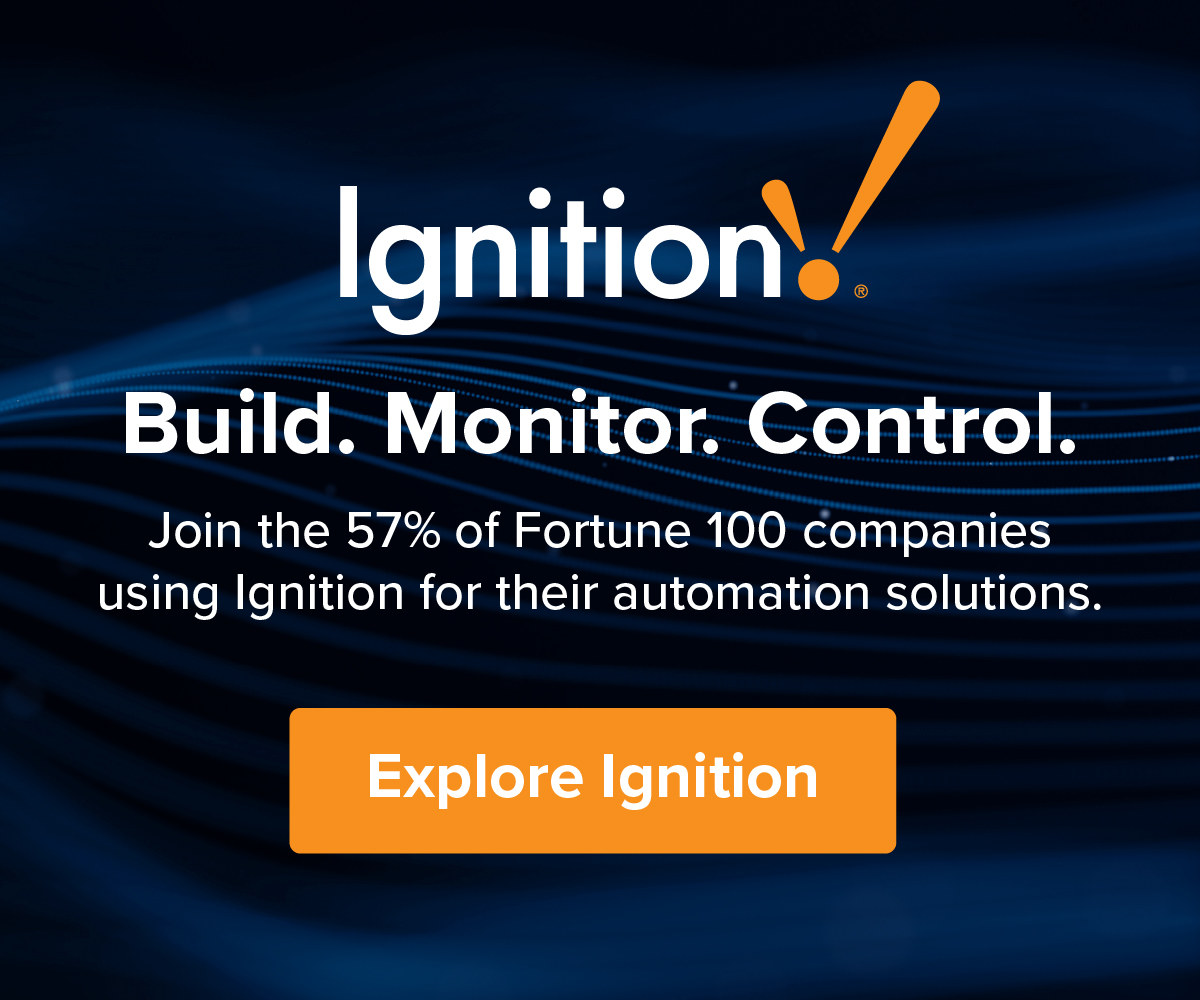by Gary Mintchell | Dec 7, 2023 | Commentary, News
Continuing in the realm of weird press releases today comes this gem about artificial intelligence company OpenAI and its leadership.
As the drama unfolds over leadership changes at AI lab OpenAI, valued at over $29 billion, social entrepreneur and thought leader Nicole Gibson, author of Legacy Disorder, has insightful commentary to offer on this saga that she believes reveals deeper issues around immature and reactive leadership in the tech industry.
Gibson contends that the volatile decision-making unfolding publicly at OpenAI reveals that some of the tech industry’s most powerful men are making hugely consequential leadership choices based on ego and emotion, rather than ethical responsibility. She argues that rash decisions made to satisfy personal power struggles could have devastating implications for humanity down the line if the leaders behind world-changing technology lack maturity and morals.
She continues about men. At the beginning of the “women’s liberation” movement when I was in university, I remember the argument that once women came into positions of power and responsibility they would bring some sort of “feminine” sensibility. I’m sure there are examples of that, but I’ve seen enough to think that it is not a universal trait. Perhaps like Sheryl Sandberg at Facebook (Meta)? I wrote several leadership editorials at Automation World and here about a school principal I knew who was the antithesis of anything close to good leadership.
Seems like human nature to me.
I remember a personality questionnaire from when I took a college summer class while in high school. I still puzzle over it. The personality traits were based on 31 questions. The results said I was 16 for masculine and 15 for feminine. One question was, do you like to hunt? My family weren’t hunters. I had never had a rifle or shotgun in my hands. So I was feminine?
Any way, rant over. Some human beings exemplify the Social Darwinism survival of the fittest doctrine. Some don’t.
Oh, and the unstated but apparent reason for the ouster of Sam Altman had to do with ethics. Three board members thought he was moving too quickly to unleash a potentially dystopian technology upon the unsuspecting world. It was ethics in their eyes. Microsoft had another ethic—called return to shareholders.
I must agree that many of the Silicon Valley types over the past 20 years have exhibited more characteristics of not-fully-brain-developed teenage boys than mature humans.
You sort it out.
by Gary Mintchell | Nov 7, 2023 | Business, Commentary, News
Investment in Momenta Industry 5.0 venture capital fund gives Rockwell early access to innovative technology that promotes resiliency, agility, and sustainability
The first Automation Fair by Rockwell Automation that I attended was in 1997. The last one in 2022. I decided that a trip to Boston was just too expensive with no anticipated financial return on that investment. I also looked at the agenda available at the time and calculated that I could cover the even just as well from the comfort of my home office and local coffee house. And, sure enough, here is the first press release.
I may rearrange my schedule to watch the keynote livestreams, but keynotes seldom add much to my coverage. If I could have been assured of more interviews, but those are off the table for mere trade media types now. I don’t ask many questions in the canned media events because why give everyone else answers?
Enough of my justifications. Rockwell made a big splash with a huge investment in PTC a few years back. They have since divested. They did pick up some crucial software technology, but then they acquired Plex and FiiX and plugged a big software hole.
This is another strategic investment with the hopes of picking up early stage technology that may take the company to the next level.
Rockwell Automation, Inc., the world’s largest company dedicated to industrial automation and digital transformation, announced its investment in Momenta’s Industry 5.0 Fund, a venture capital and value creation fund that supports entrepreneurs focused on resilient, sustainable, and human-centric industrial operations, providing Rockwell early access to innovative technology that has the potential to disrupt industrial markets and increase sustainability.
Switzerland-based Momenta launched the $100 million fund in cooperation with the EU Commission to support start-up companies working to advance the Commission’s Industry 5.0 initiative. The initiative highlights research and innovation as drivers for a transition to a sustainable, human-centric, and resilient industry, moving the focus from shareholder value to stakeholder value. It puts people at the center by empowering them with information and technology to make decisions with clarity and confidence. Aimed at early growth-stage innovators driving the digital transformation of energy, manufacturing, smart spaces, and supply chains, the Industry 5.0 Fund will deliver venture capital investment and direct value-creation to entrepreneurs in Europe and North America.
Rockwell is an anchor investor in the fund, and its Venture team will work closely with Momenta and the portfolio companies, offering a wide breadth of expertise and Rockwell’s strategic network. The investment complements Rockwell’s inorganic growth strategy, giving the company insights and access to next-generation technologies driving digital transformation that are still in the early development stage.
by Gary Mintchell | Nov 2, 2023 | Commentary, News, Software
I’m not a fan of most of these analyst market surveys. This metaverse news from GlobalData seems to have a bit of being out of sync. I do agree with the analyst’s views, but the market forecast does not seem to go along with the analysis.
GlobalData states, “The metaverse, a virtual world where users share experiences and interact in real-time within simulated scenarios, will face an uphill path ahead as limited use cases hamper its adoption. GlobalData’s latest report, “Metaverse – Thematic Intelligence”, reveals that the metaverse struggles from limited knowledge of the theme, unimpressed consumers, the postponement of projects by Big Tech, and concerns with privacy and security.
So when they state that it will be worth $400 billion by 2030, up from $48 billion in 2022, I wonder. A 10x multiple of market growth when it all looks so pessimistic? And, it’s $48 billion now?
Rupantar Guha, Principal Analyst at GlobalData’s Thematic Intelligence team, comments: “The metaverse has struggled to live up to the excessive hype that built up in 2021 and early 2022. The theme has lost its luster due to limited use cases and the limitations of underlying technologies like blockchain, augmented reality (AR), virtual reality (VR), and digital twins. Without improvements in these technologies, the metaverse will continue to disappoint.”
He is spot on. (Although I wonder about the blockchain note.) I barely had published a post on metaverse when all the hype went to GenerativeAI, Large Language Models, and ChatGPT.
Technology companies must develop user interfaces that are easily accessible, synchronize real and virtual environments, and provide safety and comfort during prolonged use. Platform providers must offer a range of content that users want to experience repeatedly. Those that stick to one content type will limit their revenue opportunities in the long run.
Some companies are finding a niche use case with training linking a plant digital twin to visualization.
Guha concludes: “The metaverse hype is primarily focused on consumer use cases, but solutions like data visualization, collaboration, and training will fuel the enterprise metaverse. Despite skepticism around its long-term benefits, focusing on the future of work will boost adoption by large enterprises in the next five years.”
Maybe. The use cases are still pretty niche. We’ll see if someone figures out a way to use these headsets for useful work.
by Gary Mintchell | Sep 22, 2023 | Commentary, News
- Calix Continues 24-Year Leadership in US Rural Broadband by Expanding Strategy To Include American Manufacturing, Ensuring Full Participation in the Broadband Equity, Access, and Deployment (BEAD) Program
- Calix and its strategic manufacturing solutions provider, Jabil, join with government leaders, including US Assistant Secretary of Commerce Alan Davidson and Michigan Lieutenant Governor Garlin Gilchrist, to unveil the details of its strategy to meet Build America, Buy America (BABA) requirements by manufacturing critical broadband hardware systems from the unique US-built Calix software and cloud platform at Jabil’s facility in Auburn Hills, Michigan
The Biden Administration and the US Congress have provided funds for investing in manufacturing in America. This news comes as a result of some of that investment. It links the goal of providing broadband access for all Americans with another goal of building American manufacturing.
Calix Inc. affirmed its commitment to “Build America, Buy America” (BABA) for the Broadband Equity, Access, and Deployment (BEAD) program during a special event held at a manufacturing facility in Auburn Hills, Michigan, operated by Jabil Inc. This commitment includes expanding a manufacturing services agreement with Jabil at its Michigan facility. Calix was joined by government leaders United States Assistant Secretary of Commerce Alan Davidson and Michigan Lieutenant Governor Garlin Gilchrist.
Calix was founded in the United States (US) 24 years ago with an exclusive focus on enabling rural broadband service providers (BSPs). Over the past 12 years, Calix has invested $1.2 billion to build the only end-to-end software and cloud broadband platform, further establishing the company as the leading technology partner to rural BSPs across the US. Calix has more than 1,300 active US customers and nearly 100 percent serve rural markets, where they are leading the way to close the digital divide. The decision to move manufacturing to the US will ensure that Calix customers can leverage the BEAD program to meet this objective—and it will create new, high-value manufacturing jobs nationwide by building on decades of US-led innovation across Calix Cloud®, software, and systems.
With an initial investment from Calix of $4 million to $6 million and an ongoing spend for operations of $10 million to $15 million per year, Calix manufacturing solutions providers will hire workers in manufacturing, operations, engineering, quality assurance, and administrative roles as they ramp US production of Calix optical solutions—a first step in the company’s BABA initiative. The ongoing collaboration with these manufacturers will create more than 100 American jobs, with additional jobs planned as Calix customers participate in the BEAD program over the next five to 10 years.
Calix has longstanding partnerships with three manufacturing solutions providers: a five-year partnership with Jabil, an eight-year partnership with Gemtek, and a 10-year partnership with Hisense Broadband. The manufacturing services agreements between Calix and these providers reflect the following:
- Jabil will produce optical network terminals (ONTs) and optical line terminals (OLTs) in Michigan
- Gemtek will produce ONTs at its California facility
- Hisense Broadband will produce optical modules at its New Jersey facility
Quotes from leaders involved:
“We founded Calix 24 years ago in the US by focusing on and partnering with US rural broadband providers as they innovated to close the digital divide,” said Calix Chairman Carl Russo. “Cooperatives, tribal and community-owned, family and community run, and private equity-backed local broadband providers are the lifeblood of rural America, and we appreciate the opportunity to partner with federal and state leaders on broadband programs that help them expand the great work that they do every day. In doing so, they have created tremendous value for underserved communities across the US as our America-led software and cloud innovation in broadband has enabled even the smallest BSP to thrive and provide the essential broadband services that enable economic growth, education, health, and safety. Calix, our customers, and our partners are tremendously thankful to the National Telecommunications and Information Administration (NTIA) and the Commerce Department for their leadership in ensuring that we can deliver world-class broadband and life-enhancing managed services to every citizen and local business. More importantly, they are doing it through a program that will help us meet this objective through Calix America-led software and cloud innovation while contributing to America’s manufacturing renaissance.”
“President Biden’s Investing in America agenda and commitment to ‘Made in America’ is driving a resurgence in manufacturing across the country,” said US Secretary of Commerce Gina Raimondo. “Today’s announcement is more evidence that we can close the digital divide and connect everyone in America to high-speed internet networks built by American workers with American-made equipment.”
“The ‘Internet for All’ initiative is not just a connectivity program; it’s a jobs program—for the people who build the networks and for the people who make the equipment those networks need,” said US Assistant Secretary of Commerce for Communications and Information and NTIA Administrator Alan Davidson. “If network equipment can be made in America, it should be made in America. Companies like Calix are stepping up and answering that call.”
“Jabil is excited to join Calix in supporting the BEAD program while bridging the digital divide to bring critical broadband access to those who need it most,” said Jabil Executive Vice President of Operations Gerald “JJ” Creadon. “As a global manufacturing solutions provider, we have a presence in 30 countries and more than 100 facilities, yet Jabil was founded less than 30 miles from this state-of-the-art factory in Auburn Hills. We are extremely proud to ramp production of Calix’s industry-leading platforms here in Michigan, incorporating the latest automation and process technologies to accelerate the delivery of Calix’s industry-leading broadband-access equipment.”
by Gary Mintchell | Aug 15, 2023 | Commentary, News, Sustainability
My career spans three technology/market cycles. I’ve seen the excitement of new companies, new technology adaptations, new markets three times. All as user and marketing/sales and writer/influencer.
I got involved thanks to a boss with the IT world in the late 70s. At the same time I started playing around with PCs—a Timex Sinclair that I wrote games and education aids for my wife’s 3rd grade class and a Radio Shack TRS-80 that I began setting my dad’s accounting business on. This was before 1980. The deep dive into automation for machinery came in the mid-80s. I’ve followed these passions ever since.
There were large and stimulating media around all three markets. Remember all the products in PC Magazine and its siblings in the 80s and 90s? When I switched to media in 1998 at Control Engineering, it also was packed with new products as many new companies sprang up with a new take on control platforms or software.
Then I experienced the consolidation and maturity of all three markets. IT magazines…gone. PC magazines…gone (maybe a couple on the web). Automation and control magazines are half the size of 15 years ago…and maybe even less. I saw it coming in 2013 when I left Automation World and struck out as an independent writer in the space.
The MacBook Air M2 I’m writing this on is faster and has more memory than the MacBook Air I had a decade ago. But really, it’s still the MacBook Air. Excitement in the PC industry has not been PCs but mobile phones that are really computing devices. There exist a few thriving companies in the industrial market right now—mostly software companies.
There is still innovation in each of the spaces. Certainly all the excitement of playing around with the tech is gone.
What is the next big question for each of these technology markets? Or, what big question will generate an entirely new technology market? Remember, the real reason humanity has developed new technology has been to solve a problem to help humanity (well, aside from gaining an advantage in war).
One interesting thing remains—sustainability. We made so many products enabling production and manufacturing that fouled the soil and atmosphere. Now engineers are taking the technology and using it to clean up the mess. I’ve had interesting conversations with Honeywell and Rockwell Automation and ABB. And even Siemens on the topic. As we forge into a world looking for cleaner energy than fossil fuels, theses companies will supply the technology to help entrepreneurs develop and market solutions.
On that subject, check out this podcast from HPE’s Michael Bird on new energy sources. Perhaps here is a place to apply all that creativity.
by Gary Mintchell | Jul 31, 2023 | Commentary, News
Here is a bit of news in our rapidly maturing market. I don’t know that it necessarily means anything and I don’t know any of the people, but I do find it interesting that no long term PTC executives were promoted. That job goes to the CEO of a recently acquired company. I guess we can try to read the tea leaves about what that means for the future direction of the company—and what’s important. In a maturing market, the new CEO has a background in finance and most recently running the service operations.
PTC today announced that Neil Barua, President of PTC’s Service Lifecycle Management business, will succeed James Heppelmann as Chief Executive Officer of PTC at the time of the Company’s annual shareholder meeting in February 2024. At that time, Mr. Heppelmann will step down as CEO and retire, concluding a distinguished 26 years of service at the Company, including 13 years as CEO. Effective immediately, Mr. Heppelmann is appointed Chairman of the Board, and Mr. Barua is appointed CEO-elect and to PTC’s Board of Directors.
The CEO transition is the culmination of the Board’s comprehensive succession planning process to ensure leadership continuity and to position PTC for continued growth. Mr. Heppelmann and Mr. Barua will work closely together through February 2024 to ensure an orderly transition of responsibilities.
Here are the obligatory statements from the major players.
Bob Schechter, who has served as Chairman of PTC’s Board of Directors for the last eight years, said, “Neil is the ideal person to lead PTC in its next chapter. He’s a seasoned technology executive with a proven track record of growing software businesses and supporting industrial companies with their digital transformation journeys. He combines this with a strong financial acumen, a customer-first mindset, and a leadership style that empowers employees. The Board and I have great confidence that PTC has a bright future ahead with Neil serving as CEO alongside the rest of the Company’s experienced leadership team.”
Mr. Schechter continued, “Throughout his tenure as CEO, Jim has demonstrated unwavering commitment to PTC, and his positive impact on the Company cannot be overstated. His visionary leadership has helped transform PTC into the category leader in the product lifecycle management market and has driven record financial performance for shareholders. The Board sincerely thanks Jim for all his contributions to date, and we look forward to our continued work together.”
Mr. Heppelmann said, “I’m immensely proud of all that PTC has accomplished during my 26 years with the Company, including these last 13 as CEO. PTC has become a premier digital transformation partner to our customers, with the most differentiated software portfolio in our industry. I’m confident that PTC has never been in a better position to deliver value to our customers and our shareholders as we begin this next chapter. Having worked closely with Neil since the ServiceMax acquisition, I can attest first-hand to his focus on our customers’ and employees’ success, his understanding of PTC’s market opportunities for the entire software portfolio, and his principles of financial and operational discipline. I’m confident that Neil, along with our proven executive leadership team, will keep PTC on a path of sustained growth and success.”
Mr. Barua said, “It’s an honor to be named the next CEO of PTC, and I greatly appreciate the confidence the Board has placed in me. PTC is a terrific company with great customers, talented employees, and the strongest product portfolio in our industry. The Company has been performing exceptionally well, and we’ll build on this success as we enter our next chapter. I look forward to working with Jim and our executive team during this transition and deepening my relationships with our customers, employees, partners, and shareholders.”
Barua’s Experience
Mr. Barua has an extensive background in the technology industry and a proven track record of growing businesses. Mr. Barua is the former Chief Executive Officer of ServiceMax, a recognized leader in cloud-native, product-centric field service management software, which PTC acquired in January 2023. Following the acquisition, Mr. Barua led PTC’s Service Lifecycle Management business until his appointment as CEO-elect. Previously, Mr. Barua served as an operating partner at Silver Lake, a global leader in technology investing. Earlier in his career, Mr. Barua was CEO of IPC Systems, a global provider of specialized technology solutions for the financial services community. Mr. Barua holds a B.S. in Finance & Economics from the NYU Stern School of Business.
Board Changes
In connection with the announced leadership changes, Janice Chaffin, Chair of the Corporate Governance Committee of the Board, will serve as Lead Independent Director. Bob Schechter, previously Chairman of the Board, remains on the Board as an Independent Director.





